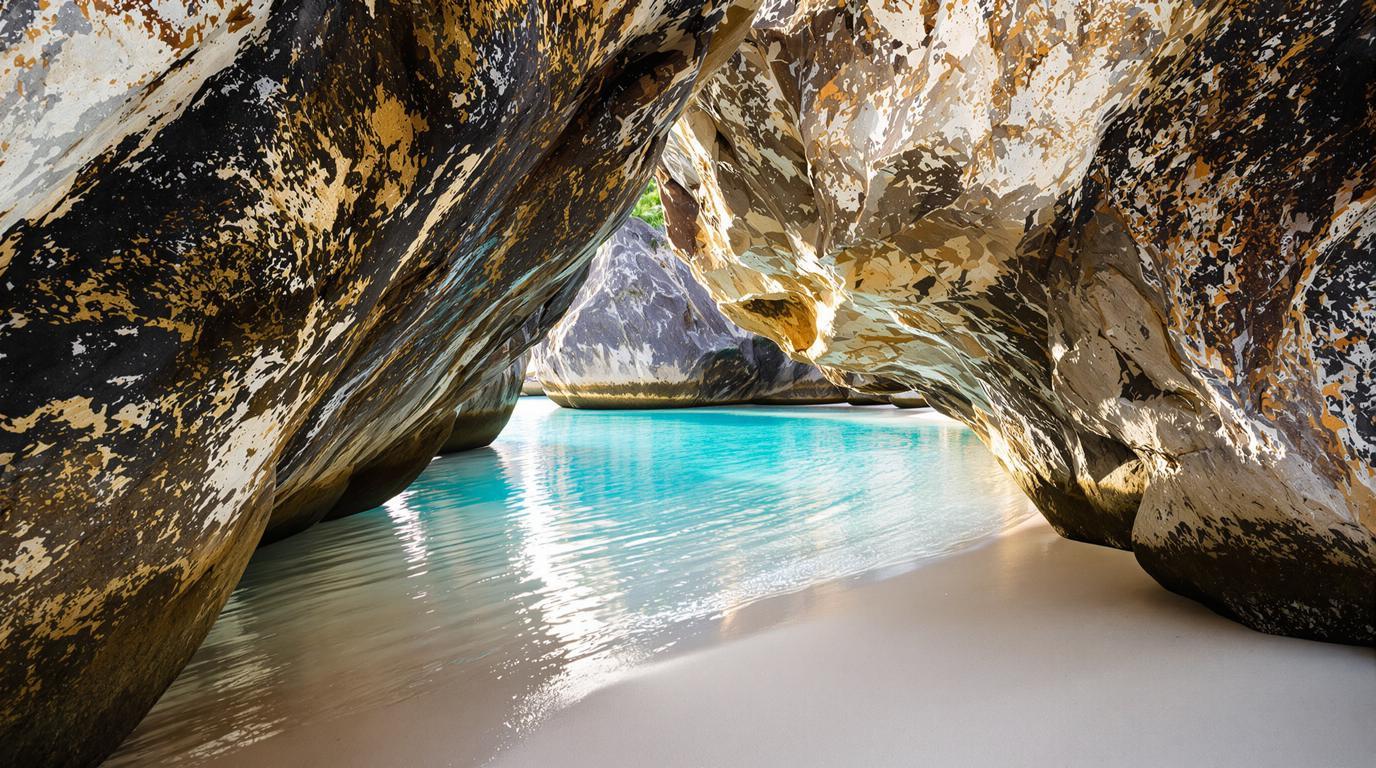The tiny island emerges from the turquoise Indian Ocean like a secret whispered between travelers. As my bicycle wheels crunch along the narrow dirt path, the dense palms part to reveal a beach so impossibly perfect it seems painted rather than formed by nature. La Digue may be the fourth-largest island in the Seychelles archipelago, but here, smallness becomes its greatest asset – a place where time slows to match the gentle rhythm of waves against granite.
Where bicycles replace cars and granite sculptures the shore
“We have no traffic lights on La Digue, just the occasional tortoise crossing,” laughs Marie, a third-generation islander, as she serves fresh papaya at her roadside stand. Unlike its more developed sisters Mahé and Praslin, La Digue has steadfastly resisted modernization. The island’s 3,000 residents have maintained a car-free existence, creating a tranquility that feels increasingly precious in our accelerated world.
Colonized by French settlers in the 18th century and later ruled by the British, the island’s Creole culture now blends European, African, and Asian influences. This cultural tapestry reveals itself in everything from the colorful wooden cottages to the vanilla plantations that perfume the air with their sweet complexity.
Discovering treasures beyond the postcard views
The hidden lagoon that requires perfect timing
While tourists cluster at the famous Anse Source d’Argent, I pedal toward the isolated beach of Anse Marron, accessible only by a 20-minute bicycle journey through ancient forest. The trail narrows until I’m forced to continue on foot, scrambling over massive granite boulders warmed by the tropical sun.
The effort delivers its reward: a natural swimming pool formed by granite enclosures, perfectly protected from the open ocean’s waves. “You must time your visit with the tides,” a local guide had warned me. “At high tide, the path disappears completely.” This delicate dance with nature’s rhythms feels emblematic of La Digue itself – a place that rewards those willing to move according to the island’s own schedule rather than imposing their own.
The fisherman’s cove where breakfast is caught daily
At dawn, I find myself at the tiny harbor of La Passe, where fishermen return with their overnight catch. Unlike the small Thai islands where reefs appear just steps from shore, La Digue’s marine bounty requires venturing further out, but the results are spectacular. Wooden pirogues arrive laden with red snapper, grouper, and octopus still glistening with seawater. No menus needed here – tonight’s restaurant specials will be decided by what these boats contain.
Tasting the island’s soul through vanilla-infused dishes
At Belle Vue – a family-run restaurant perched on a hillside overlooking Grande Anse – I discover that La Digue’s culinary identity extends far beyond seafood. The day’s specialty is octopus curry, but with a distinctly Seychellois twist: coconut milk infused with hand-pollinated vanilla from the owner’s plantation. The combination creates a subtle sweetness that balances the rich spices.
“Every family has their own secret blend,” explains Chef Anton as he brings a second helping without my asking. “My grandmother would never share hers, so I had to learn by smell and taste alone.” The vanilla-scented air drifting from the kitchen suggests he learned well.
Planning your escape to La Digue’s rhythms
Timing your visit with nature’s calendar
May through October offers the calmest seas and clearest visibility for snorkeling the coral gardens off Anse Patates. The southeast trade winds that blow during these months also provide welcome relief from the equatorial heat. November brings slightly higher humidity but significantly fewer visitors.
Moving between islands with local knowledge
Unlike destinations where tourism infrastructure dominates, La Digue maintains its authentic pace. The Cat Cocos ferry from Mahé stops first at Praslin, where you’ll transfer to a smaller vessel for the final leg to La Digue. Book the morning departure to avoid afternoon swells that sometimes make the 15-minute crossing unexpectedly adventurous.
Once on island, Loul’s Bicycle Rental near the jetty offers well-maintained bikes, including models with baskets perfect for market purchases or beach essentials. Request one with good lights if you plan to stay out past sunset – the island has minimal street lighting, preserving both energy and stargazing opportunities.
Remembering what travel once promised us
As dusk settles over La Digue and I pedal slowly back toward my guesthouse, I pass children playing in front yards, fishermen mending nets, and neighbors sharing fruit harvested from their gardens. This island exists as gentle reminder of what travel originally promised – not Instagram backdrops or luxury amenities, but genuine connection to places where life unfolds differently than our own. In this increasingly homogenized world, such small islands with preserved traditions and ecosystems become not merely destinations but necessary reminders of alternative possibilities.
